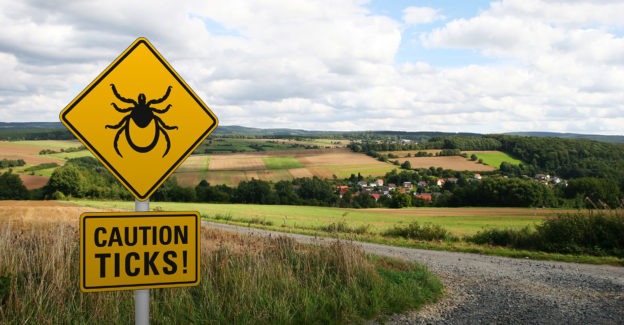Instructor
Elizabeth Maloney, MD
Education Co-Director, Invisible International
Description
Lyme disease is a growing public health problem. This presentation covers the changing epidemiology of Lyme disease and the clinical applications of surveillance data.
Learning objectives
- Understand the purpose and limitations of the surveillance case definition (SCD) of Lyme disease
- Understand the epidemiology of Lyme disease
- Understand the clinical role of Lyme disease epidemiologic data
This session, The epidemiology of Lyme disease, is approved for 0.5 enduring AAFP Prescribed credits.
AAFP Prescribed credit is accepted by the American Medical Association as equivalent to AMA PRA Category 1 credit(s)™ toward the AMA Physician’s Recognition Award. When applying for the AMA PRA, Prescribed credit earned must be reported as Prescribed, not as Category 1.
The AAFP has reviewed One Health Medical Education for a Changing Climate and deemed it acceptable for AAFP credit. Term of approval is from 01/02/2024 to 01/01/2025. Physicians should claim only the credit commensurate with the extent of their participation in the activity.
Evidence-based bibliography for further study
• https://wwwn.cdc.gov/nndss/conditions/lyme-disease/case-definition/2017/ Accessed March 15, 2020.
• Engstrom SM, Shoop E, Johnson RC. Immunoblot interpretation criteria for serodiagnosis of early Lyme disease. J Clin Microbiol 1995; 33:419 – 427.
• Dressler F, Whalen JA; Reinhardt BN; Steere AC. Western blotting in the serodiagnosis of Lyme disease. J Infect Dis 1993; 167(2): 392-400.
• Eisen RJ, Eisen L Beard CB. County-Scale Distribution of Ixodes scapularis and Ixodes pacificus (Acari: Ixodidae) in the Continental United States. Journal of Medical Entomology, 53(2), 2016, 349–386.
• Naleway AL, Belongia EA, Kazmierczak JJ, Greenlee RT, Davis JP. Lyme disease incidence in Wisconsin: a comparison of state-reported rates and rates from a population-based cohort. Am J Epidemiol. 2002 Jun 15;155(12):1120-1127.
• https://www.cdc.gov/lyme/datasurveillance/index.html?CDC_AA_refVal=https%3A%2F%2Fww w.cdc.gov%2Flyme%2Fstats%2Findex.html Accessed March 15, 2020
• https://www.cdc.gov/lyme/stats/graphs.html. Accessed March 15, 2020.
• https://www.cdc.gov/lyme/datasurveillance/charts-figures-recent.html. Accessed March 15, 2020.
• Mead P. Statement by Paul Mead MD, M.P.H., Medical Epidemiologist, Division of Vector-Borne Infectious Diseases, National Center for Infectious Diseases, Center for Disease Control and Prevention, US Department of Health and Human Services on Hearing: CDC’s Lyme Disease Prevention and Control Activities at public hearing in re Lyme disease, State of Connecticut, Department of Public Health, 29 January 2004.
• Nigrovic LE, Neville DN, Balamuth F, Bennett JE, Levas MN, Garro AC; for Pedi Lyme Net. A minority of children diagnosed with Lyme disease recall a preceding tick bite. Ticks Tick Borne Dis. 2019 Feb 26. pii: S1877-959X(18)30496-5. doi: 10.1016/j.ttbdis.2019.02.015.
• Berger BW. Dermatologic manifestations of Lyme disease. Rev Infect Dis 1989;11(Suppl 6):6:S1475-S1481.
• Nadelman RB, Hanincová K, Mukherjee P, et al. Differentiation of reinfection from relapse in recurrent Lyme disease. N Engl J Med. 2012 Nov 15;367(20):1883-1890.


